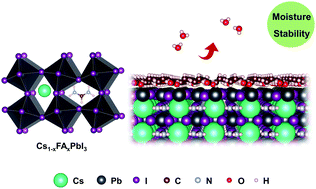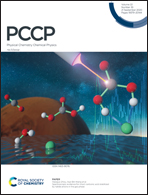Effects of compositional engineering and surface passivation on the properties of halide perovskites: a theoretical understanding
Abstract
Halide perovskite solar cells have demonstrated high power conversion efficiency. Compositional engineering and surface passivation technologies have been drawing great attention to enhance their energy conversion efficiency and moisture resistance. In this study, the density functional theory method was employed to understand the effects of compositional engineering at the A site of perovskites and the 3-butenoic acid-based passivation layer on the structural, electronic and optical properties of halide perovskites. Our results suggest that the electronic and optical properties of CsPbI3 can be tuned by the mixing of caesium and FA cations. Moreover, the calculation of adsorption energies on mixed-cation Cs1−xFAxPbI3(001) surfaces reveals that the much stronger adsorption strength of 3-butenoic acid facilitates blocking of the interaction of surfaces with water molecules. Meanwhile, the calculated results indicate that adopting such an organic molecule as a passivation layer does not compromise their excellent electronic and optical properties. Our theoretical understanding of the A cation engineering and organic molecule-based surface passivation will be beneficial to the improvement of the overall performance of perovskite solar cells.



 Please wait while we load your content...
Please wait while we load your content...